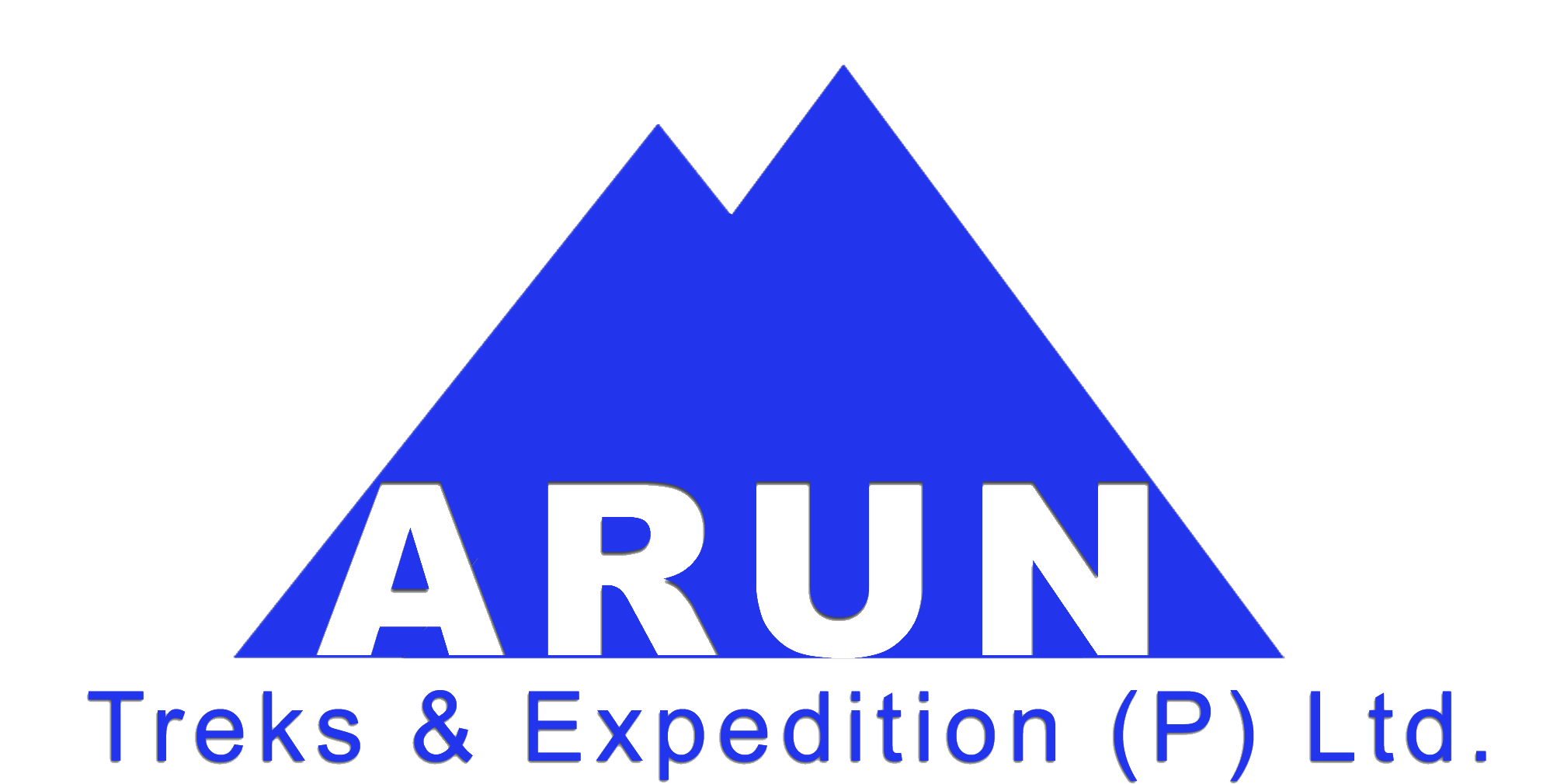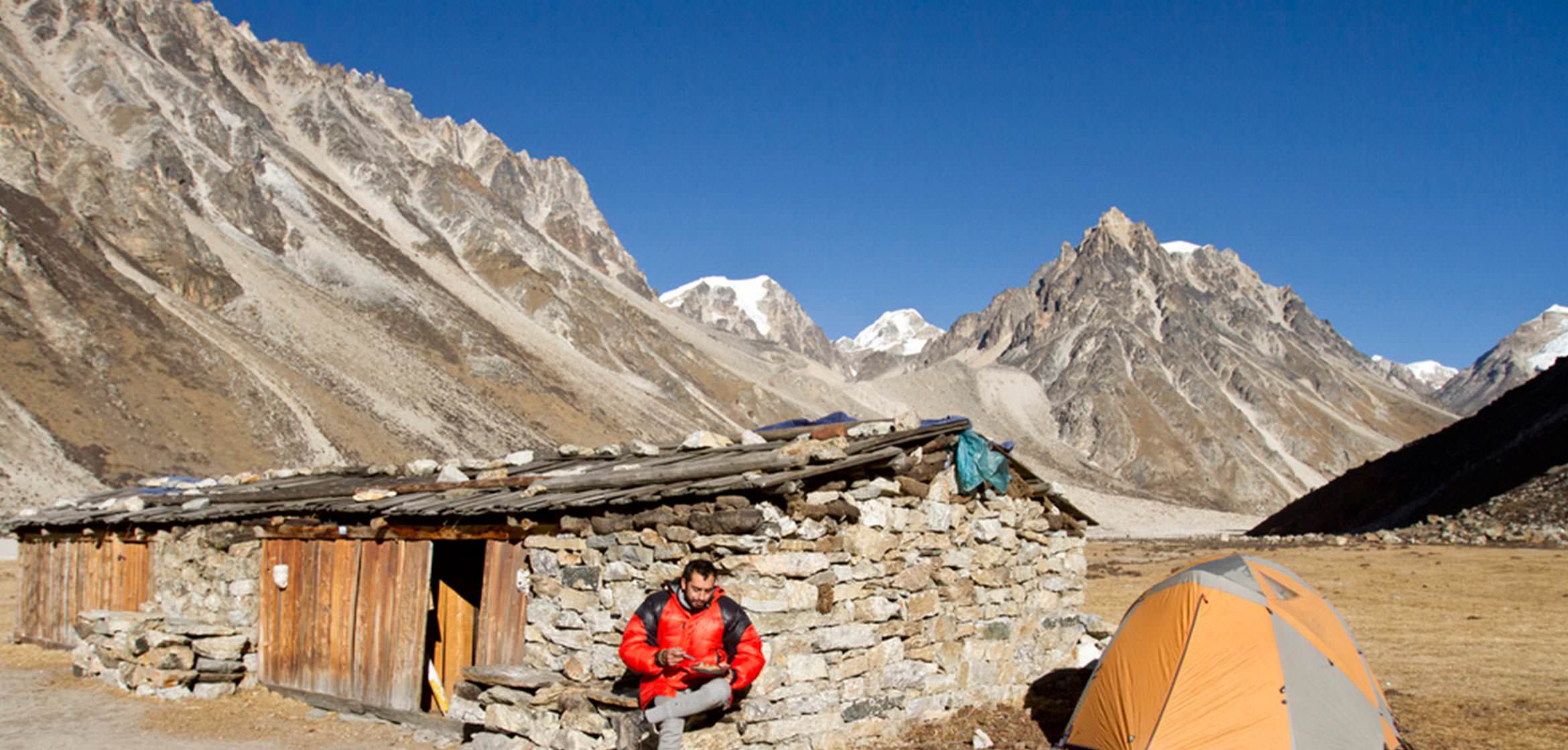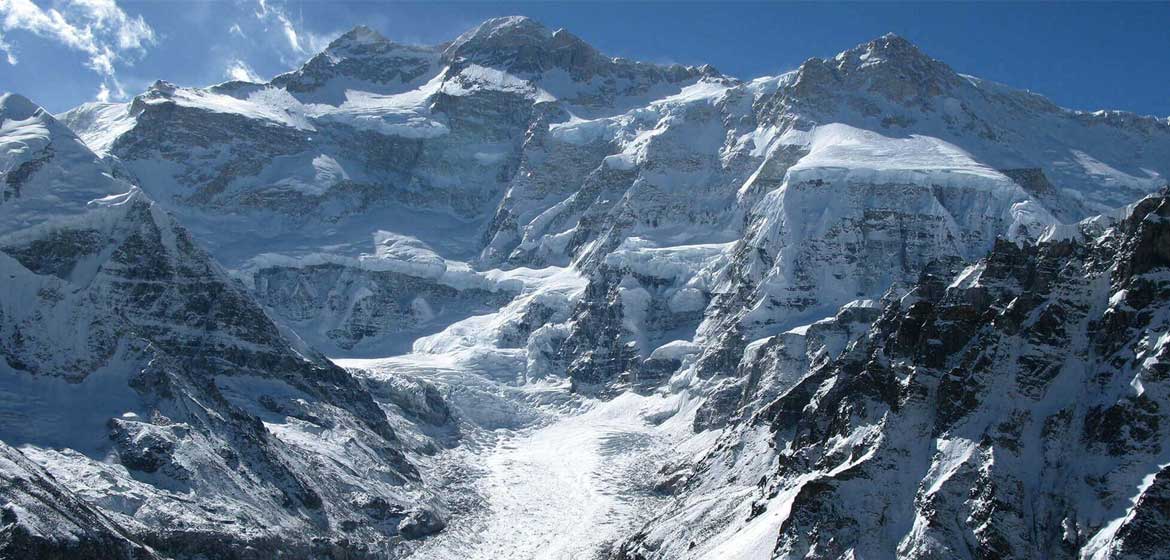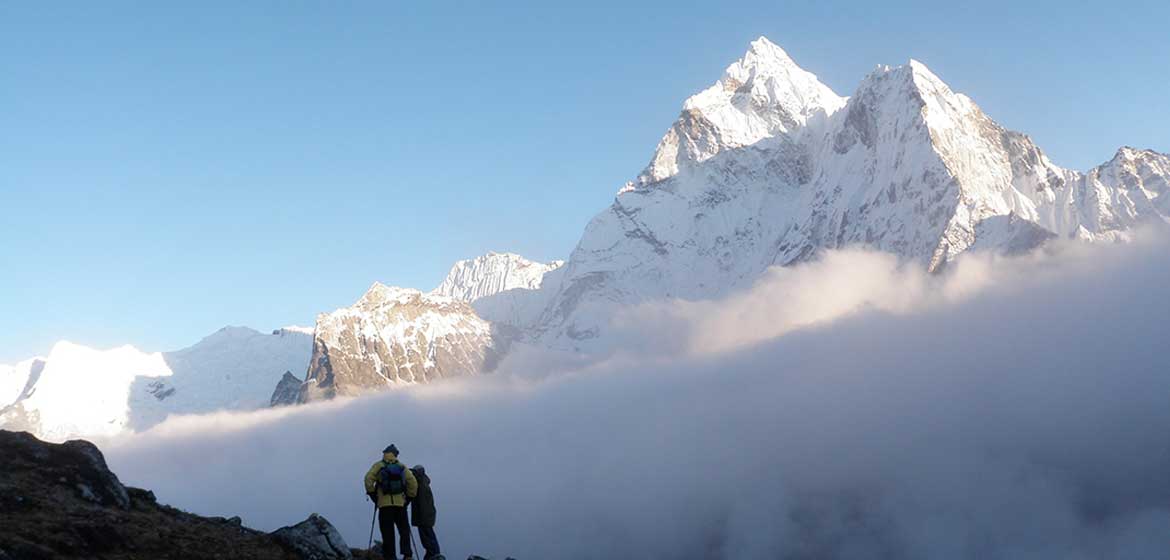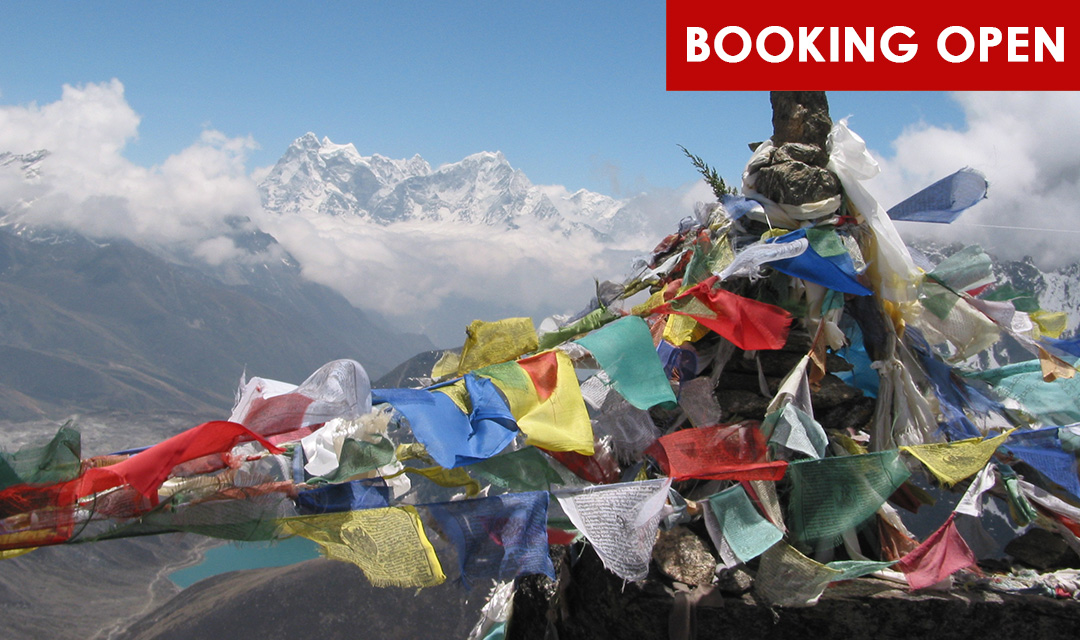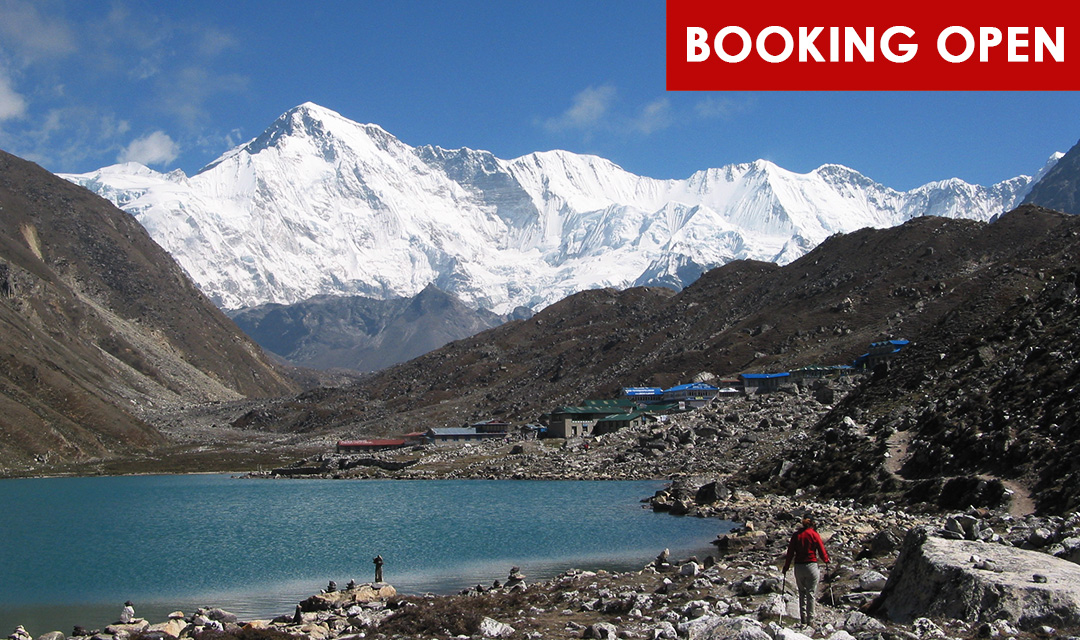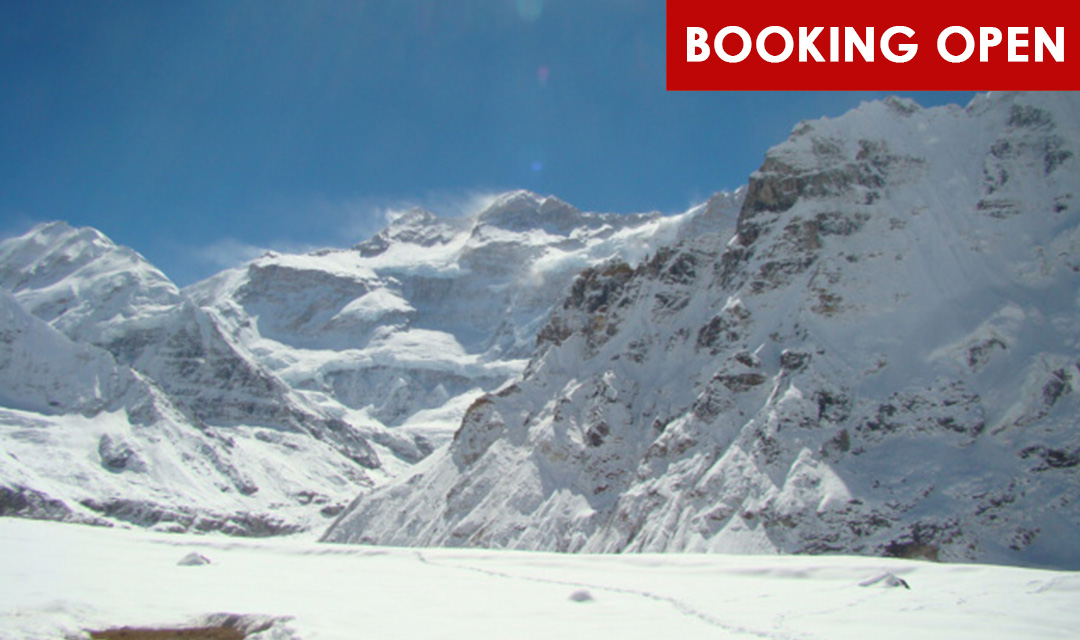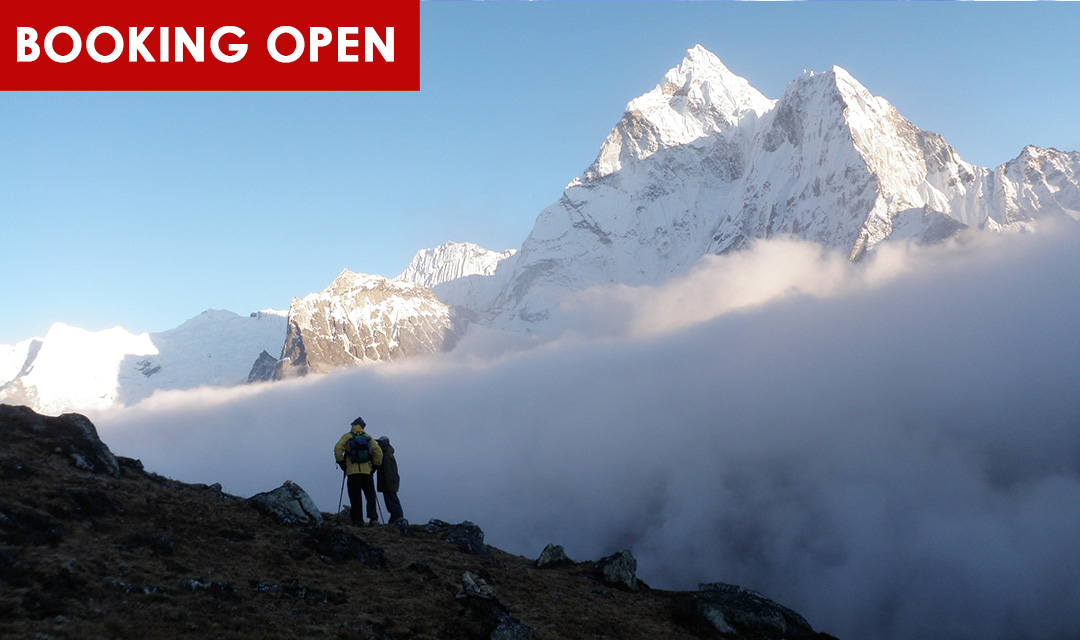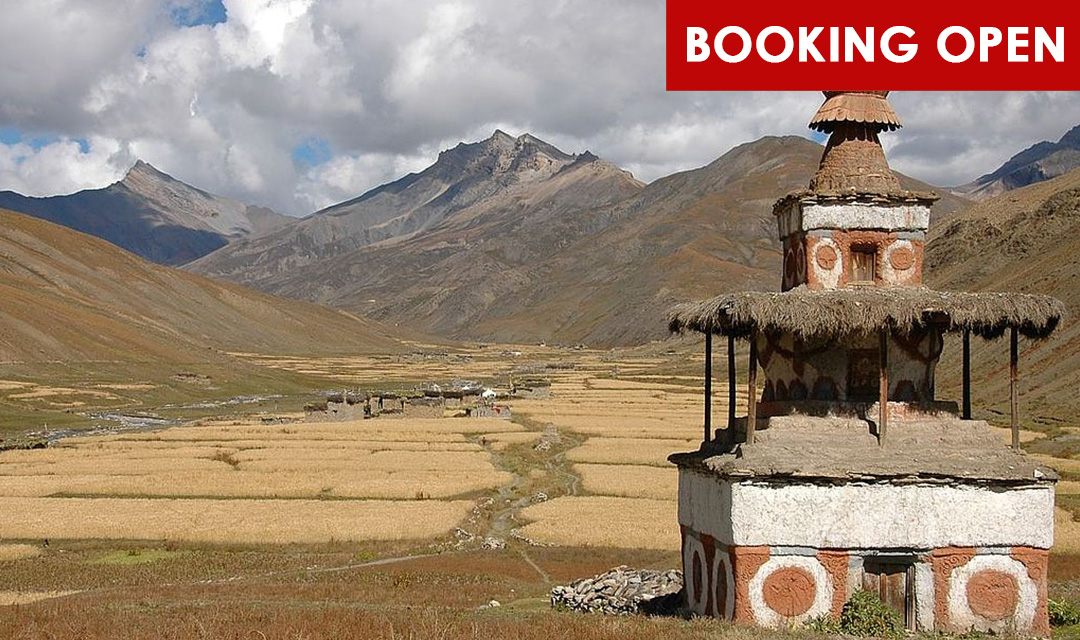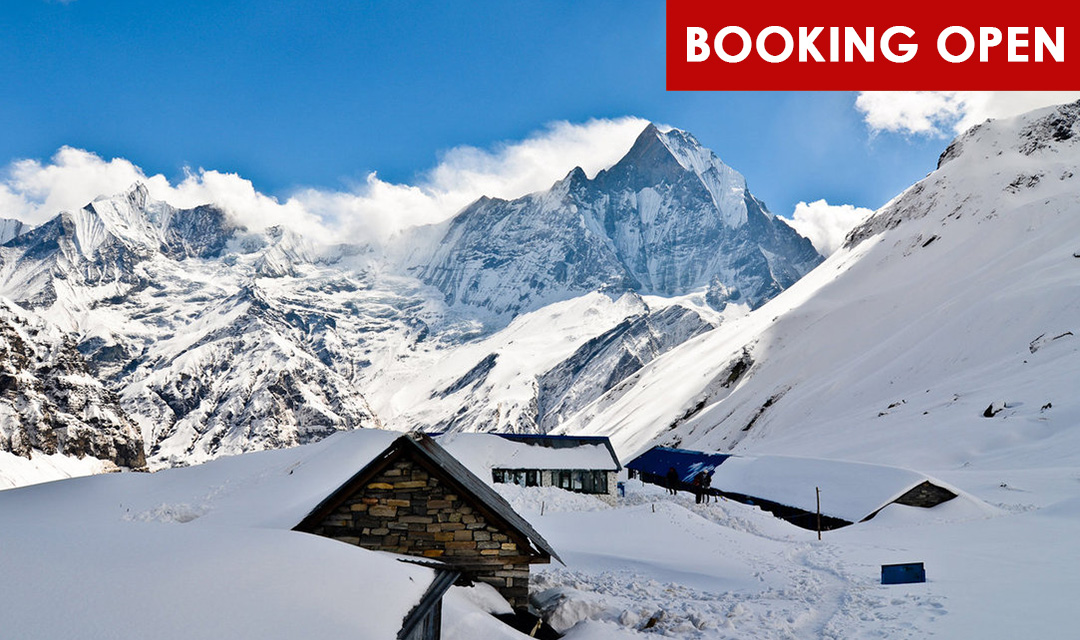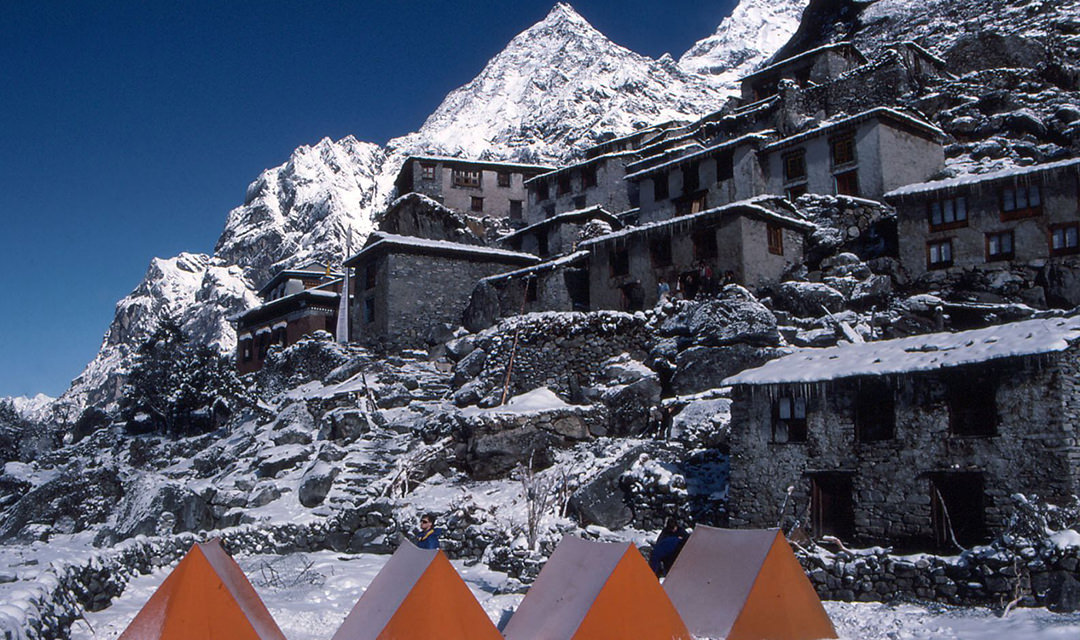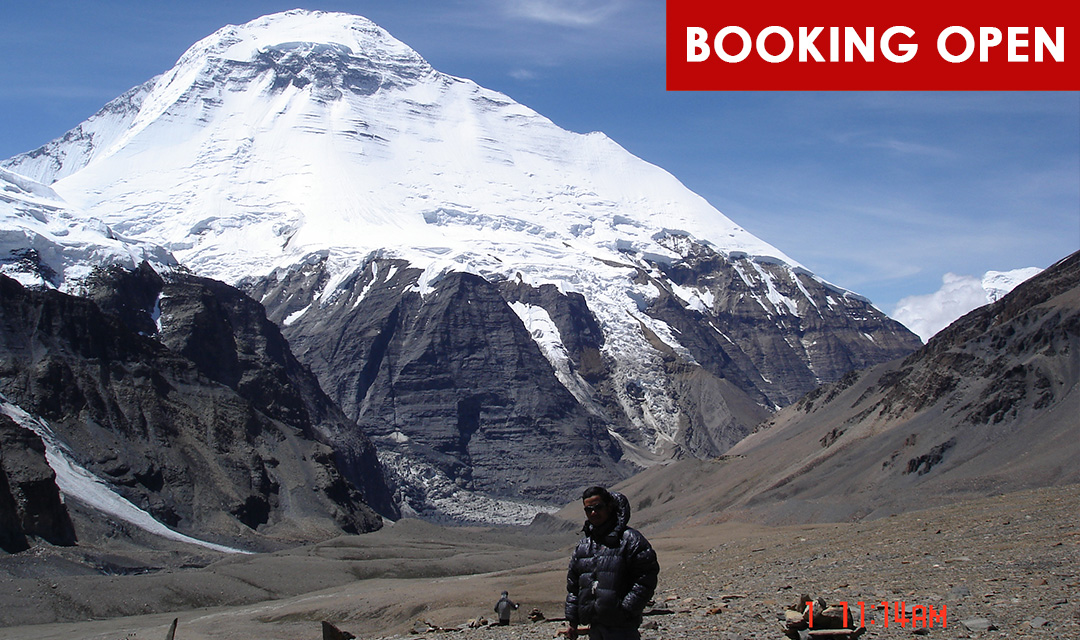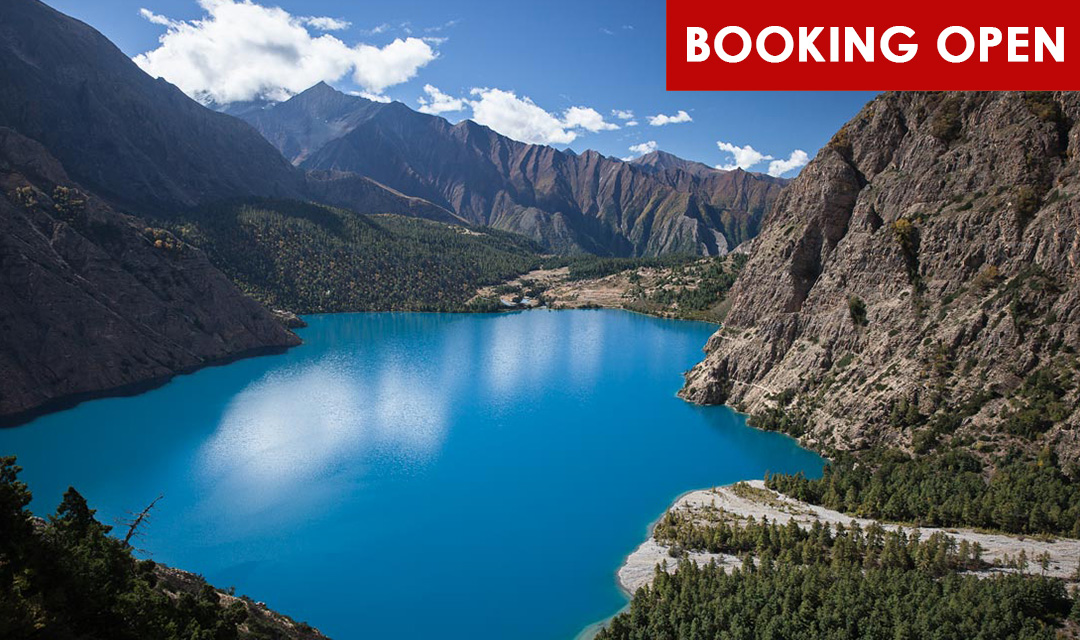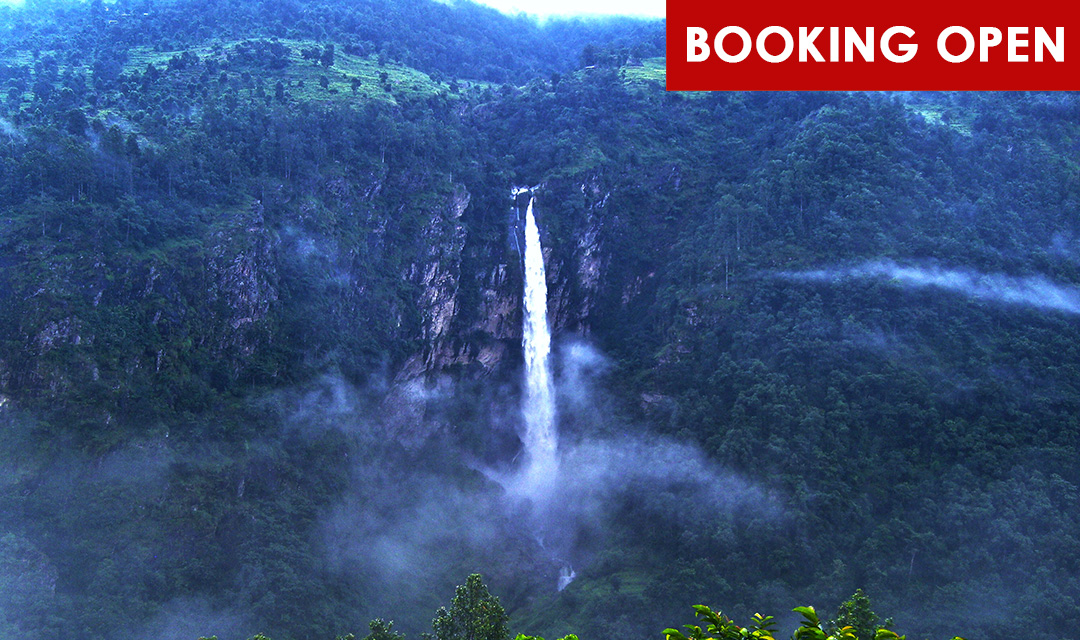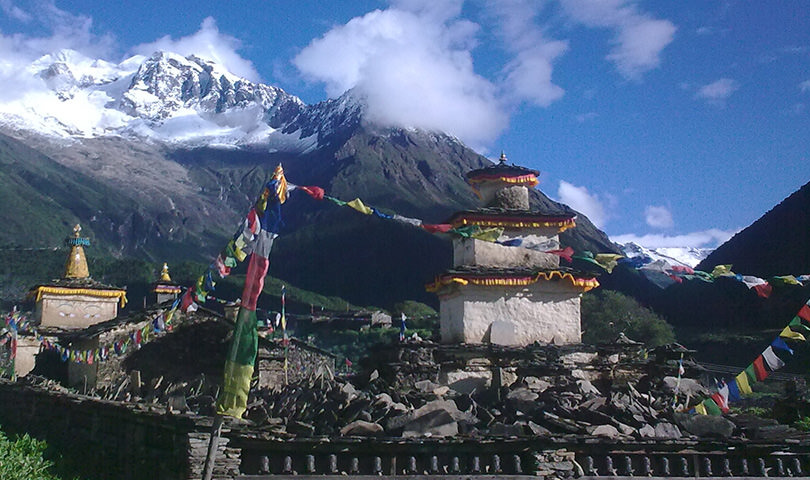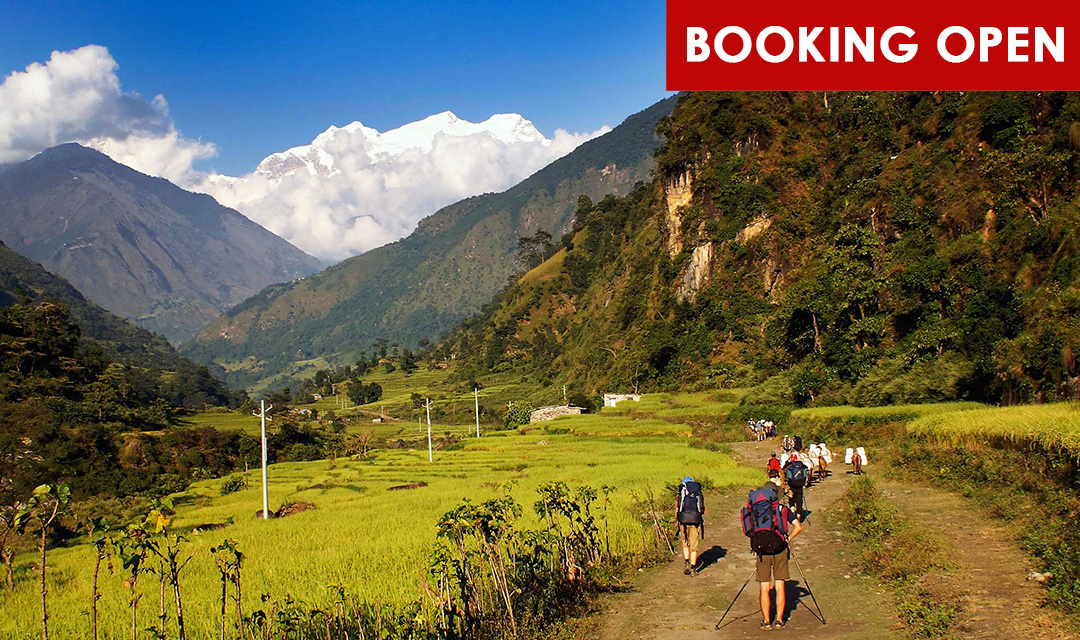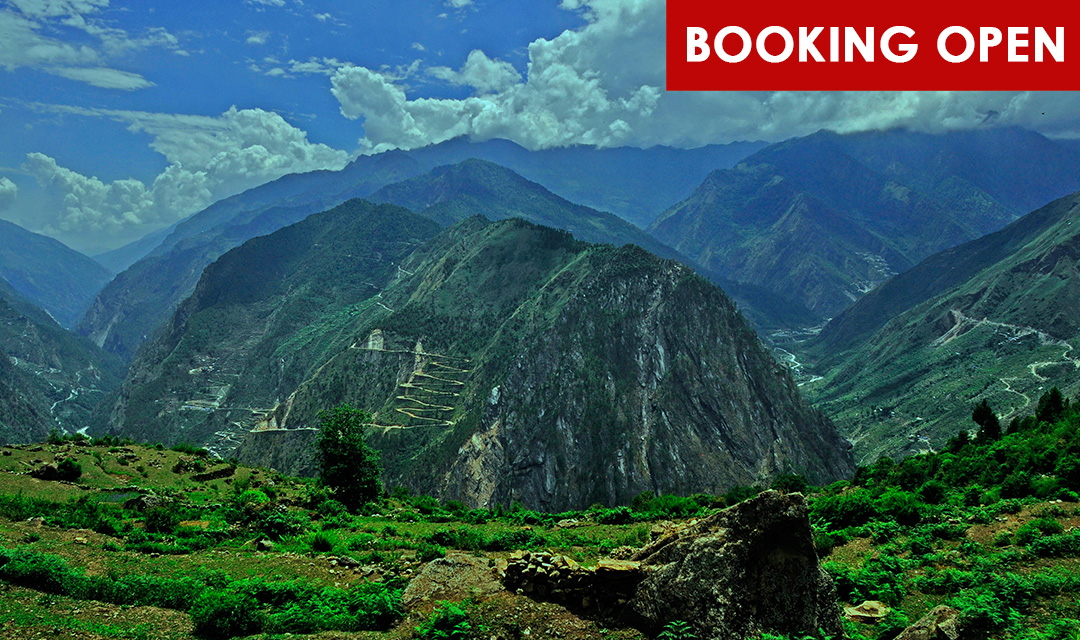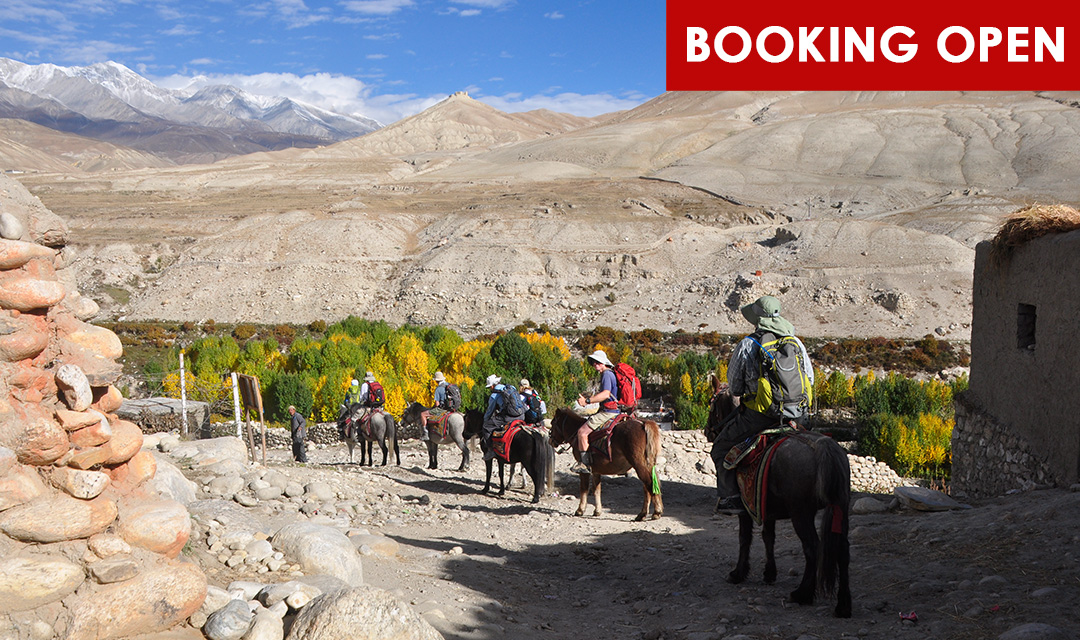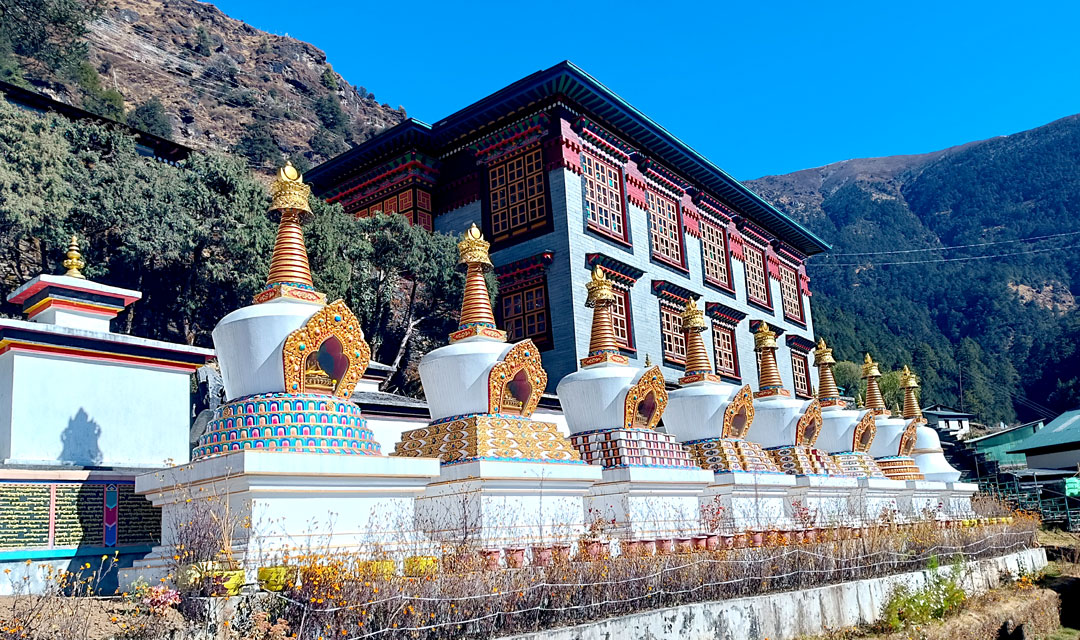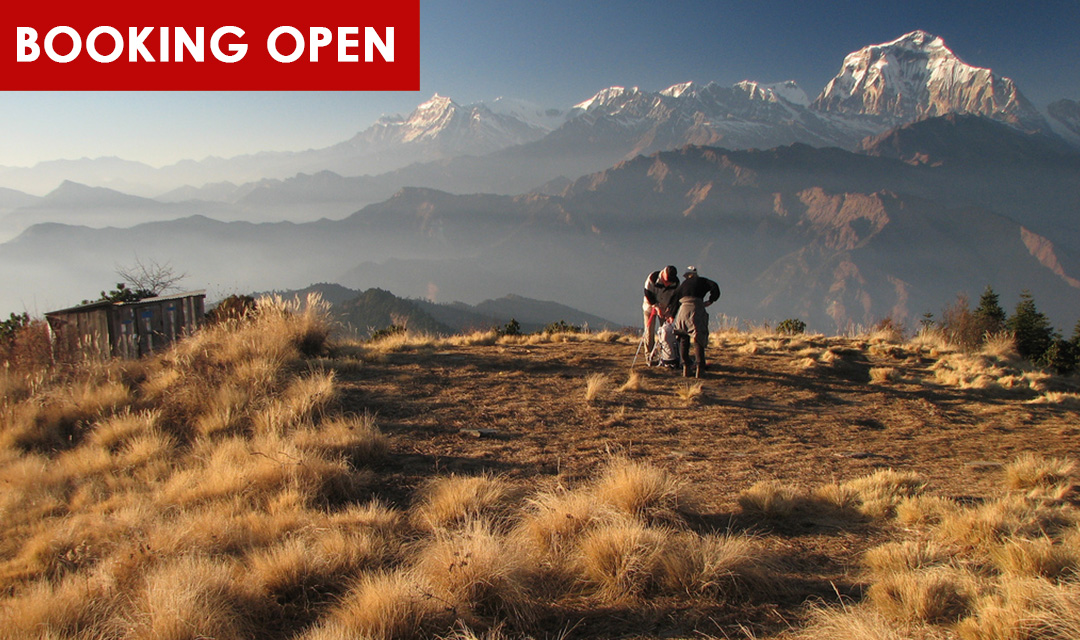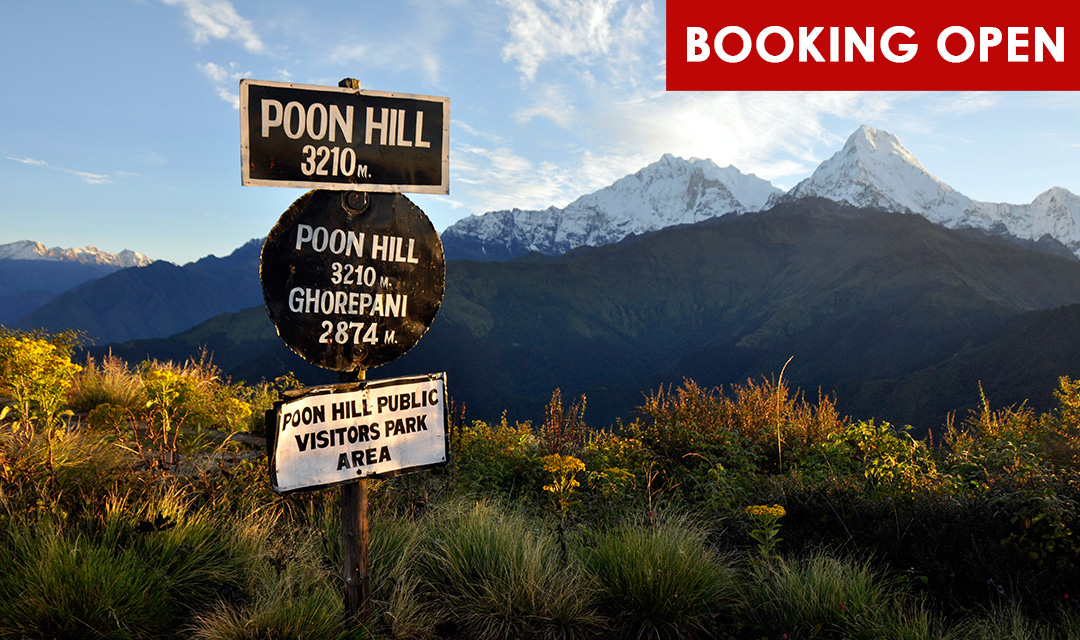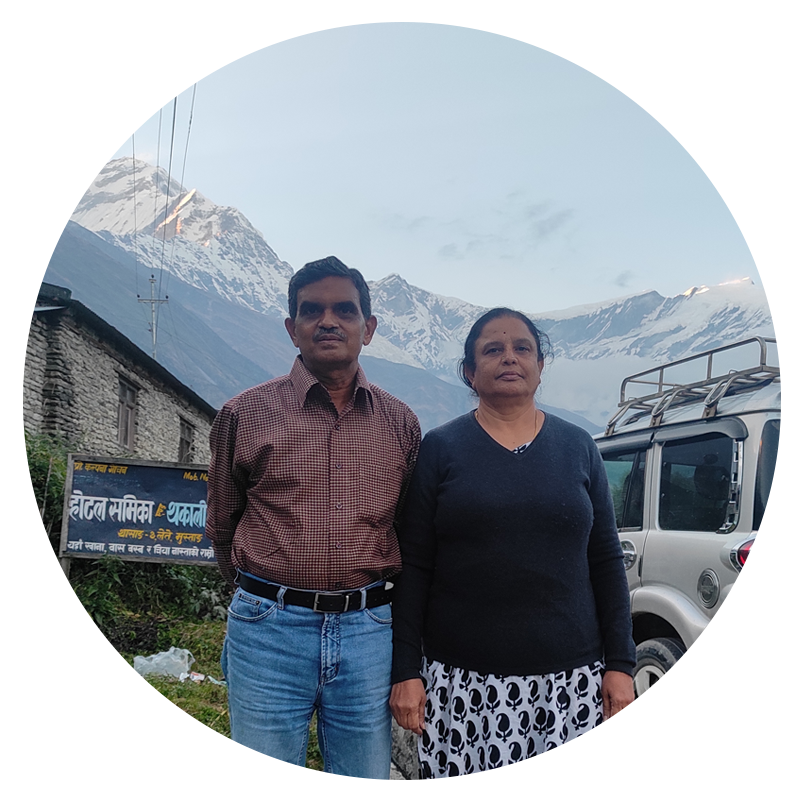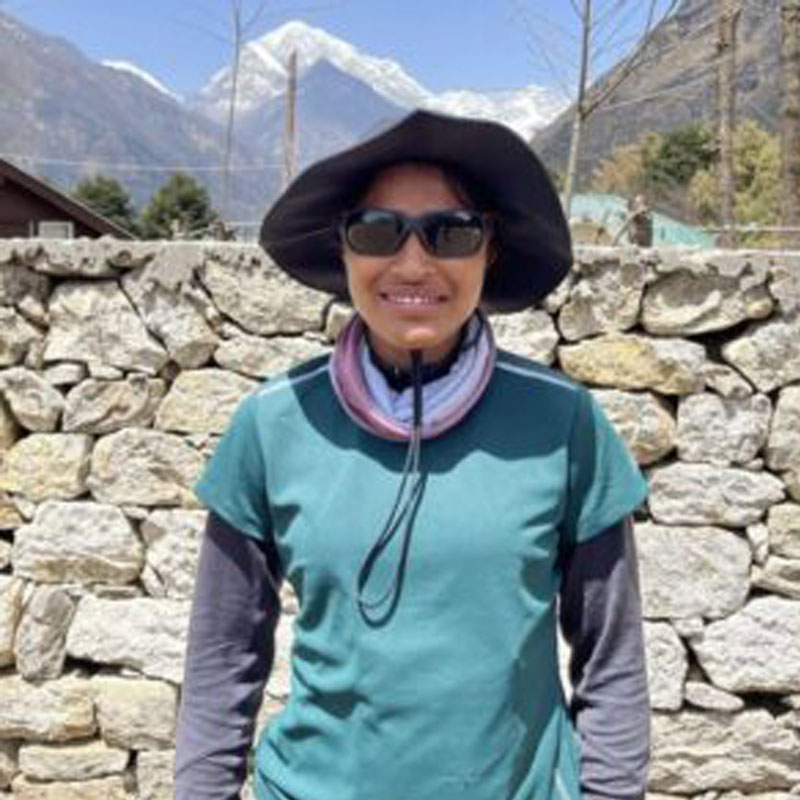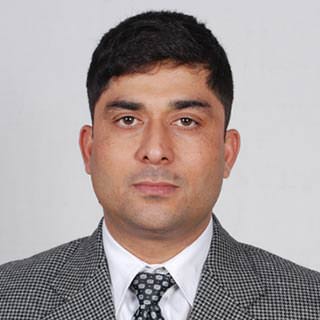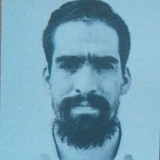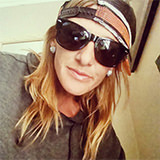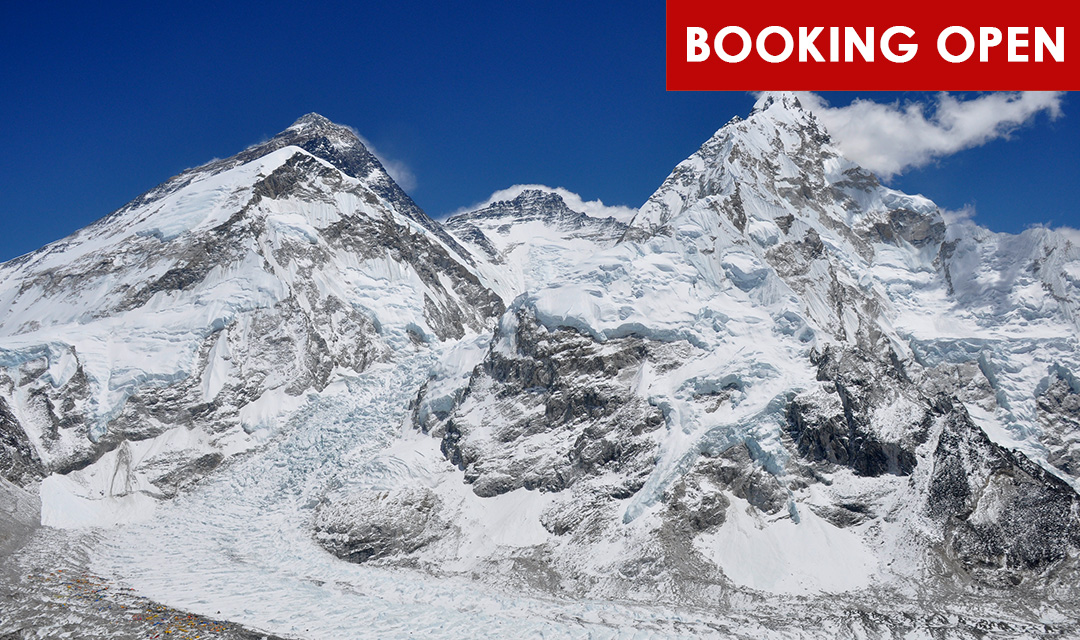
Kanchenjunga (28198ft & treasures of the snow) is the third height mountain in the world and was first climb by the British in 1956. Lying on the Nepal – Sikkim borders, the lush landscape of the Kanchenjunga area is an ideal environment for musk beer, blue sheep and the infamous yeti. Few westerners have traveled to this remote area.

Day 1: Arrive in Kathmandu, transfer to hotel
Day 2-3: Fly Bhadrapur and drive Taplejung
Day 4-11: Trek to Khambachen
Day 12-15: Trek to Chheram
Day 16-18: Trek to Yamphudin Village
Day 19: Trek Kheban
Day 21: Drive to Bhadrapur, onto Ktm.
Day 23: Fly back home
 |
Arrival in Kathmandu, transfer to hotel & short briefing |
| After finishing your custom formalities (Visa, etc) obtain your bags and appearance for our representative with a Arun Treks display panel at the gate. You may be then transferred to your Hotel. Once sign up, you may visit ATE workplace, meet your trekking guide likewise as different participants and do final preparation for the trip. Later within the evening there'll be a welcome dinner which can introduce you to the Nepalese food culture. | |
 |
Fly Bhadrapur & Drive Illam |
| 3.5 hrs. Approximately after 1 hour flight, we’ll reach to Bhadrapur. Then we’ll drive towards Illam. There you’ll find a lovely view of tea-garden, great scenario of hills and spectacular Sunrise and sunset views. | |
 |
Drive Illam to Suketar, Taplejung |
| 4-5 hrs. Our journey continues with one more around 4 to 5 hours of ride to reach to Suketar (2420 meters). | |
 |
Trek Sinwa (980m) / Chirwa (1200m) |
| 6-7 hrs. Follow the east bank of Tamur as the trail dips and rises along the riverside, striking rocky fields and landslides to a valley populated by the Limbus peoples, the descendants of the Kirati warriors who ruled Nepal at the dawn of Nepalese history. The valley narrows and descends to a wooden bridge across the Thiwa Khola at 1140m, then wind up and down along the riverbank of Chirwa. We camp near Chirwa, a pleasant bazaar with a few tea houses and shops. | |
 |
Trek Sekhathum (1560m) |
| 5-6 hrs. Stroll north along the east bank of the Tamur River on a rolling trail to the Chhetri village Tapethok (1320m). This is a Kanchenjunga National Park checkpoint. From here cross the Simbuwa khola, a river formed by the Yalung Glacier, along the Tamur to the Walunchung gola (3220m). Drop down to the Tamur and cross on a new suspension bridge, just above the confluence with the Ghunsa Khola. It’s a short walk along the steep to a riverside camp site near the Tibetan village of Sekhathum. | |
 |
Trek to Amjilesa village(2,500m) |
| 6 hrs. Start on the narrow trail that wind along the north bank. After few ups and downs beside the river, you’ll reach some stone steps that scramble high above the river to a waterfall and the tiny hamlet of Ghaiyabari (2150m). Another climb from the gorge bottom passes by Solima. The trail passes along the gorge, hence be careful while walking. Then following the uphill and downhill tricky trial, we conclude our today’s hectic journey at Tibetan settlement Amjilesa. | |
 |
Trek to Gyabla village(2,750m) |
| 5 hrs. This is relatively short day continues to climb along the Ghunsa valley. You’ll definitely feel the mountains are getting closer as you climb to a flat ridge and meander through a forest of bamboo, Rhododendron and gnarled brown oaks, passing scattered pastures and waterfalls. We climb steeply to Kyapart, perched in the middle of terraced hills about 350m up from the Ghunsa Khola. The trail begins a grinding climb to the Sherpa village of Gyabla. | |
 |
Trek Phale (3240m) |
| 4 hrs. From Gyabla trek starts with downhill descending trail toward river and as we move onward valley slowly open wide on the way toward Phale. | |
 |
Trek Ghunsa (3420m) |
| 5 hrs. The day begins with a day steep drop into a ravine, followed by an easy level stage through fir and rhododendron forests along the riverbank. It takes all mornings to trek to the yak pastures and potato fields of Phole (3210m). Above Phole, the valley widens and the trail improves through fields and larch forests, dipping down to the riverbed before crossing to Ghunsa Khola and crossing a bridge to the village of Ghunsa overnight camp there. | |
.png) |
Trek to Kambachen(4,100m) |
| 6 hrs. Heading north from Ghunsa, the trail makes a gradual ascent through a forest of larch and juniper along the east bank of the river. After crossing a sandy, boulder-strewn floodpain, the path crosses a rickety, wood and stone bridge to the west side of the river at Rambuk Kharka (3720m). We glimpse the Jannu Glacier, later on we get a view of Jannu (7710m) we descend the mountainside to our camp at Khambachen and overnight staying there. | |
.png) |
Rest & explore day(jannu glacier) around Kambachen(3,960m) |
| This is a rest day to allow your body to adjust to the higher altitude. The views from here are superb- the peaks of Khabur (6332m) and Phole (6645m) and Jannu are lined up at the east, while the snowcapped ridges beyond the Kanchenjunga Glacier loom dramatically to the north. Alternatively you could try a bit of nature Photography. So deserve a rest today to collect our thoughts on how wild and wonderful everything has been so far. | |
.png) |
Trek to Lhonak(4,790m) |
| 5-6 hrs. Above Khambachen, the trail enters a desolate landscape gouged by the icy fingers of glaciers. The path climbs gradually across the slopes of landslides to pasture area Ramtang (4350m). The trail runs along the lateral moraine of Kanchenjunga Glacier, following the north bank of the river and cross over to the Lhonak Glacier. We arrive at our campsite at Lhonak. The village of Lhonak sits beside a wide, often dry lakebed, on an open, sandy plain. | |
.png) |
Trek Ghunsa (3420m) |
| 8 hrs. This will consist of walking back through the same trail from Kambachen to Ghunsa village. | |
.png) |
Trek Selele camp (4220m) |
| 5 hrs. Ghunsa to Sele Le Base Camp via Sele Le Pass, steep up to the top, rewarding view of Makalu and valley of Kanchenjunga North, hike down to Sele Le Base Camp. | |
.png) |
Trek Tseram (3880m) via Mirgin La 4480m) |
| 8 hrs. The trail contours the hillside and a short steep climb brings you to Mirgin La Pass at 4,480m. The trail then descends briefly before contouring round before a final short steep climb brings you to the top of Sinelapche La Pass at 4,840m. From the top of every pass you will be rewarded with magnificent views. From the last pass there is a 1,000m descent on a trail past a small lake to Tseram which is a small settlement located above the Simbua Khola. | |
.png) |
Trek Ramche (4100m) via Oktang |
| 8 hrs. This day, the party will walk up to Ramche for a little rest where they will pass the tip of the Yalung glacier into an ablation valley. All the peaks to the east straddle the India-Nepal border – Koktang (6,147 m), Rathong (6,679 m) and some of the Kabrus which are all over 7,000m. There is a lake and a meadow along with two stone houses at Ramche and often blue sheep can often be seen on the grassy slopes above. In the afternoon we follow the ablation valley to Oktang, the whole cirque is above 7,500m and the three main summits all over 8,400m can be seen. | |
.png) |
Trek Torongtang (3000m) |
| 7 hrs. The trail descends through Tseram and follows the river in rhododendron forest to Tortong where we camp for the night. | |
.png) |
Trek Yamphudin (Sherpa Gaon) (2200m) |
| 8 hrs. A steep ascent takes us down into the valley of the Simbua Khola after crossing an interesting wooden bridge. We ascend across some fairly steep and exposed slopes after re-entering the forest. We pass through Lamite Bhanjyang (3410m) and Amji Khola ascending to a pass at Dhupi Bhanjyang (2540m). The path zigzags down through the fields of corn and barley. Reach Yamphudin crossing the ridge at 1690m. Yamphudin is a mixed community of Sherpa, Limbu, Rai and Gurungs and the first real village since Ghunsa. | |
.png) |
Trek Khebang (1700m) |
| 6 hrs. A low hill trek, passing through unspoiled local villages and terrace fields. This is a rarely used trail and was first used by our guide Dawa. Locals do not have a lot of contact with trekkers and are very friendly and curious. Homestay is available in Khebang. | |
.png) |
Trek Happu Khola roadhead, trek Thumbeding 6-7 hrs |
.png) |
Drive Birtamode / Bhadrapur 12-14 hrs |
.png) |
Fly Bhadrapur-Kathmandu |
.png) |
Departure to your home |

Kanchenjunga (28198ft & treasures of the snow) is the third height mountain in the world and was first climb by the British in 1956. Lying on the Nepal – Sikkim borders, the lush landscape of the Kanchenjunga area is an ideal environment for musk beer, blue sheep and the infamous yeti. Few westerners have traveled to this remote area.
Kanchenjunga, regarded as the 'Queen of the great Himalayas', encompasses the mountain ridges of South Peak (8491m), Central Peak (8478m), and Main Peak (8556m), Yalung Kang, Kambachen and Jannu. It stretches southward from Jonsang La to Langpo Peak, Pyramid Peak, and Nepal Peak - all on India's border. It continues further from Talung Peak and Kabru North and South Peaks to the Twin Peaks of Rathong and Kokthan. To the west of Jonsang La, on Tibet's borders, are Jongsang Peak, Outlier, Lashar, Chabuk, and Ohnmi Kangri. Further south lie Nupchu and Sharpu. This, then, is the Kangchenjunga Region, which is also called as the "GREAT SNOW MOUNTAIN OF FIVE TREASURES".
The trek to Kanchenjunga is a long course and offers one of the best high altitude trekking trips, leading the famous peaks of eastern Nepal as Kanchenjunga and mysterious Jannu via the enormous Yalung Glacier. It also allows a trip to Lamsang La and Kanchenjunga glacier. The view of Kanchenjunga range and Kanchenjunga (8556m) the third highest in the world, from the north base camp is simply breathtaking and unforgettable, as is the north face of Jannu, a worthy destination itself. The trail goes from the Sub Tropical lowlands up to the Yalung Glacier 5000 m, enable the trekkers to experience a diverse cross section of topography, people, culture and fauna and flora. It is great mountain range that includes 4 peaks of above eight thousands meters and 18 over 7000m. Set in a remote wilderness, inhabited by a few nomadic yak herders, this region has much to offer the adventurous trekkers who are looking for something different.
We will fly from KTM to Suketar airfield of Taplejung district. From suketar we will began out trek, following a route along a ridge top towards the Tamour River where we will enjoy panoramic views of the Makalu(27825') and Chamlung(24000') peaks. We will continue through forests and rhododendron thickets and soon the Kanchenjunga range will arrear. Our route will continue up the Tamour river through the Limbu villages to the terraced mountainside village of Amjilassa and the legendry Sherpa village of Ghunsa(11400'). We will visit the monastery there and soon have our first glimpse of a sea of unclimbed peaks including the Jannu(25289'), known as a "mystery peak" or "Terror ". We will trek to the edge of the Kanchenjunga glacier and after crossing the lateral moraine; we will cut across at this junction and arrive at our campsite at Lhonak, an undisturbed landscape of unspeakable beauty.
After a couple of days of rest and exploration at Lhonak, including a day trip to pangpema (16900') to see the north face of Kanchenjunga, we will head south to Yalung glacier. We will cross of two passes, the Lapsang La (16700') or Margin La(15300') depending on which is the safest at the time, into the Simbua Khola valley and camp at Ramche (14000'). We will rest and explore the Yalung Glacier and the southern face of Kanchenjunga , then begin out trek back to heli. If you making this trip in the fall, you will be treated to the site (and taste) of orange everywhere. On our last night of camping, we will celebrate with our sherpas and porters the completion of our trek together. Your dream of seeing one of the most remote lands in the world will be fulfilled.
Enjoy the holidays in the Khumbu.

Kanchenjunga trek is an appropriate goal for bushwalkers and hikers or day-walkers looking for an extra challenge. This is a chance to get amongst the Himalayas in relative comfort of simple lodges.
Fitness
The trekking days are not long, as your body needs time to acclimatise and after all, you are on holiday. You will need to be able to walk for 4-8 hours a day with a daypack.
We are generally early abed but you might want to hang around and chat with your fellow trekkers, staff or local people or play a game of cards. Rest days normally involve a part-day hike to a place of interest or viewpoint as well as some relaxation time.
Depending on your general level of fitness you may benefit from a training regime in the lead up to the trek.
Experience
This expedition introduces you to high altitude trekking. A spirit of adventure and a willingness to stretch your horizons are what you'll need. Some experience of hiking will be an advantage.

Our style
On this Kanchenjunga trek your trek leader will be a qualified Nepalese trek guide. They are there to ensure your trek is a wonderful, fun and safe experience.
Your accomplished and friendly trek guide will help you to enjoy and appreciate the cultural, and natural attractions of the region. They will assist with daily arrangements as you eat in and stay in the tents. The package uses a steady acclimatisation program and allows time for bad weather along the way, giving participants the maximum chance of success.
The trek will be well planned, well led, and well resourced with good quality food, transport, equipment, first aid and communications.

In Kathmandu: We will be staying at the Shanker Hotel (4 star). This charming historic palace has a huge peaceful garden with a pool and is just on the edge of the main tourist area, Thamel.
It is safe and clean and well staffed, and is a safe place to leave your clean town clothes and other gear when you are in the hills. There are many restaurants in Kathmandu catering to western tastes as well as plenty of local Dahl Bhat (rice and lentils) shops at very reasonable prices.
On the Trek: Generally along the regular trekking areas we have our own clean and spacious camp sites. We always try to camp away from the crowded site to a cozy solitude premises. Each and every client will have their own tent unless there are couples or they wish to share the tent. Tents are all equipped with mattresses and a ground sheet for preventing cold.
Our professional cooks prepare three time meals a day (Breakfast, Lunch, Dinner). They are well trained & educated of hygienic variety and have broad knowledge to cook different dishes, like Mexican, Indian, Chinese and Italian and all are prepared to Western hygiene standards to keep you healthy. If someone prefers to have pure Nepalese food will be served during the treks. Nepalese food include Daal (pulse) bhat (rice) Gudruk ko tarakari (dried vegetables curry) is the special one. Please remember that Maxican & Italian dishes prepared in typical way.

Autumn season (Sept-Nov)being the best season for trekking, offers excellent weather and tantalizing mountain views, and also best season for peak climbing.
Summer months (June-September) of the year which coincides with monsoon begins in mid-June and drains in mid-September making travel wet and warm. The mountain views may not be at their best as rain clouds and haze over hang the mountains occasionally obscuring the enchanting views. These times are blessed for the keen botanist as the higher valleys and meadows blossom with flowers and lush vegetation.
Spring season (March-May) is the expedition season and the best time for climbing the high peaks. It is mildly warm at lower elevations but occasional haze mars beautiful view of mountains. At higher elevations over 4,000 meters the mountain views are excellent and the temperature is quite moderate even at night.
Winter season (December-February) is noted for cold weather with occasional snowfall at higher elevations. Again, excellent views are common. These months are popular and ideal for trekking for those who are well equipped or who remain at lower elevations below 3,000 meters. Most of the hotel owners will come to the lower altitude cities like Kathmandu and Pokhara.
Although Travel in Nepal can be organized throughout the year, October through May is considered to be the best months for trekking.

The unit of the Nepalese Currency is Rupee. One Nepali Rupee is made up of 100 paisa. Nepali Rupee notes come in Rs. 1, 2, 5, 10, 20, 25, 50, 100, 500 and 1,000. Coins come in paisa 5,10,25,50 Rs. 1, 2, 5 denominations. Paisa coins are not currently used for common transactions.
Foreign currency, and traveler cheques, can easily be exchanged at banks or authorized agents. In Kathmandu banks have money exchange counters, which are quick and convenient.
MasterCard, Visa and American Express are accepted at all major Hotels, Travel Agencies, Restaurants and Stores. Only the first two though, are currently accepted at banks for money advances. As from august 2000 ATM services are available in Kathmandu.
In the cities, and specially while trekking, change for Rs500 and Rs1000 bills is not easily available.

Banks are open between 10:00 A.M. to 2:30 p.m., Sunday to Thursdays and between 1 0:00 a.m. to 12:30 p.m. on Fridays. Closed on Saturdays and national holidays. Some Banks in Thamel, Kathmandu are open till late.

We recommend cancellation insurance to protect your investment. We require participants to have travel insurance that covers medical expenses, Chopper evacuation and repatriation. Please ensure that your chosen policy provides cover for the activities (trekking and mountaineering with ropes and guides) and in the localities in which you will travel (Nepal, to elevations up to 5230m/17158ft above sea level).
You may already have your own policy but if not you will need to put something in place. Your nationality will determine what options are available to you to cover this trip. For example the British and New Zealand Mountaineering Clubs provide cover for locals; Australians can look into Insure for less with the appropriate extensions to the standard policy. Whatever policy you take out, you must ensure that is covers the activities you will undertake on this trip.

• Conservation/national park fees and all government taxes
• Kanchengunga area trek permit
• All the local require transportations
• An experience Guide (s),
• Sherpa escort(s),
• Trained Cook and kitchen boy (s),
• Necessary number of porters to carry the loads
• Camping gears / equipments
• Best quality tents with sleeping mattress
• All necessary kitchen equipments and kitchen tent
• Group dinning tent with chairs and table
• Toilet tent and shower tent
• Best quality food & drinks (tea/coffee/chocolate, breakfast, lunch, dinner) during the trek
• Gamo bag/Oxygen with mask and regulator for emergency purpose
• First aid box and Water purification tablets

• Medical/personal high risk insurance,
• International departure tax
• Personal trek gears
• Major meals in Kathmandu
• Cost of personal expenses
• Tips to the local staffs

Most of our adventures in the Himalaya take us to remote regions of high altitude. We always take our time to acclimatize properly and we allow for additional rest days. While most people may experience minor ill effects from high altitudes, there are some who have persistent symptoms, which require return to a lower altitude or emergency evacuation. Adjusting to a new diet can also take some time.
All clients are required to have travel insurance covering emergency rescue, usually by helicopter. We must stress that this kind of evacuation occurs in a life or death situation only. Rest and/or descent to a lower altitude are the best remedies for most illnesses experienced out on the trail. Circumstances differ, and the head guide with regard to treatment and itinerary will evaluate each situation. Considering the ill person condition, if helicopter evacuation required then just co ordinate with your guide, he can talk to us, we will arrange the fastest evacuation system immediately. We will work with you to accommodate your needs and requests to the best of our ability. There are small, limited health clinics in some areas, hours of operation dependent upon the season. Additional costs incurred in cases of illness are not the responsibility of mine or will be charged as extra cost.
| Trip Code | - | ATE-KanchenjungaTrek |
| Altitude | - | 5230m/17158ft |
| Grade | - |  |
| Activities | - | Trekking |
| Trip Duration | - | 19 |
| Trip Best Season | - | April/May/Oct/Nov/Dec |
| Group Size | - |
 (12 Maximum) (Flexible for private groups) (12 Maximum) (Flexible for private groups) |
| Start/End at | - | Kathmandu, Nepal/ Kathmandu, Nepal |
| Destination | - | Nepal |
| Departure Date | - | N/A |
| Cost | - | US$ 1,785 |
| Hotel Info | - | N/A |
.png)
• Travel/town clothes (can leave extras in hotel in KTM)
• Sun hat suitable for snow conditions
• Sunglasses: Category 3 or4, glacier type, UV & polarized are best
• Snow goggles (as for skiing)
• Warm (fleece/wool) hat or beanie
• Fleece scarf or neck gaiter AND balaclava
• 1-2 pairs of thermal liner gloves
• Windstopper fleece gloves
• Heavy mitts with waterproof shell (note: mitts not gloves)
• T-shirt/long-sleeved shirt
• 2 Thermal tops
• Fleece jacket or pullover mid weight
• Fleece jacket heavy weight
• INCL Mid-heavy weight down jacket
• Rain and wind-proof jacket, preferably Gore-Tex
• Rain and wind-proof pants (best with full side zips)
• Trekking shorts&/or long pants lightweight
• 1-2 Thermal long pants
• Fleece long pants, mid weight
• Several pair's socks and underwear
• Trekking boots – we suggest strong leather boots
• Warm boots for camp (e.g. sheep skin boots) *Optional but great!
Other Personal Gear
• Sun screen, zinc cream and lip balm
• Wash kit (small personal toiletries, nail clippers and pack towel)
• First aid kit and blister kit
• Personal medicines including your usual medicines
AND 1 course each of (usually available in Kathmandu):
• Respiratory antibiotic (e.g. Amoxycillin)
• Gastrointestinal antibiotic (e.g. Ciprofloxacin)
• Gastro treatment (e.g. Imodium)
• Mild pain killers (e.g. Aspirin/paracetamol/ibuprofen)
• Throat lozenges
• Altitude medication (e.g. Diamox)

Day pack 70L - 85L
• Down suit
• One sport millet shoes
• Water containers: minimum 3L: e.g. Nalgene wide mouth bottles 1L + bottles or bladder another 2L capacity
• INCL Foam sleeping mat
• An extra sleeping mat (*recommended; e.g. Thermo-Rest or Ridge Rest
• 1 Summit down sleeping bag for high camps
• INCL Sleeping bag for base camp and trek use
• Water-proof bag for sleeping bag (e.g. dry bag or robust plastic bag(s))
• Head lamp (we suggest Black Diamond with LED), spare batteries
• Pee bottle — wide mouth Nalgenes are good *Optional
• Crampons Alpine style with rapid-fix bail type to suit your boots (e.g. Black Diamond Sabretooth)
• Gaiters (for snow) appropriate to your plastic & trekking boots
• Adjustable trekking pole(s)
• Ice axe: one only, 65-75cm in length
• Climbing harness with a belay loop, adjustable leg loops
• Belay/Abseiling gear: e.g. Black Diamond ATC
• Ascender e.g. Petzl expedition ascender
• 2 Non-locking carabineers
• 2 Locking carabineers (wide gate preferred)
Group Equipment Supplied
INCL Group medical kit (for altitude illness, trauma, reserve antibiotics); emergency oxygen and portable altitude chamber
INCL Satellite phone (pay for air time used: USD /minute)
INCL Sleeping tents, dining tent, all cooking and eating equipment & food on trek/climb
INCL 240VAC generatorat BC to recharge camera batteries
INCL Barrel or duffle bag for transporting personal gear by Yak and truck
INCL Climbing ropes, fixed safety ropes
INCL Snow anchors, ice anchors, rock anchors, v-thread cord
NOTE: You must have all of the above personal gear, clothing and equipment. It may be possible to buy some extra equipment (If forgotten) but don't rely on it.
R: This item is available to rent
INCL: This item included in package
Arun Trek's trip web pages, and pdf info packs have lots of info about each specific adventure (search for your adventure here). You may also like to look at our photo galleries or videos for a taste of adventure, or download a wallpaper to inspire you at your computer. This page has answers to some more general Frequently Asked Questions (FAQS) about climbing.
As all of our mountain climbing adventures begin with a trek, you might also like to look at the Trekking FAQs.
If you have other questions, please ask our friendly team, by email, phone, and skype.
Q) Can I really climb a mountain? Do I need to have climbing experience? How can I climb Mount Everest? Can I climb the seven summits?
A) The level of experience and skills required depends on your particular goal (search for your adventure here). We suggest that people undertaking a first climb should have had at least overnight trekking experience. For those who wish to take on a technically difficult, remote or extreme altitude mountain we'd expect participants to have appropriate experience and skills. Some ideas for preparing for climbing goals are given at the bottom of this page.
Q) Why go on a guided expedition?
A) There are many reasons that might make a guided expedition attractive even for experienced climbers. These include someone else taking care of all those details (including thing as diverse as booking and confirming hotels, checking the number of evening snacks, ensuring reliable support, transport, permits, visas, team members, gear, etc etc etc etc). This saves your time and energy for the part that really matters - working on achieving your goal. The high levels of support and experience aim to give you the best possible opportunity to succeed, a high level of risk management, and the Arun leaders and staff are there for YOU!
Q) What type of people comes along?
A) Climbing expeditions usually attract people in their twenties to fifties. Participants tend to be seeking a good quality, safe, well supported, good value and enjoyable adventure rather than the lowest cost.
Q) How fit do I need to be? Will I have to carry a lot of weight? Should I be able to do 100 chin ups?
A) The fitter you are, the more fun you (and your companions) will have. You will find guidance on preparing for your expedition on each adventure's web page (search here), our info packs and trip dossiers. A minimum level of fitness would have you being able to walk all day on uneven, hilly ground, carrying your day pack, and be able to get up again the next day. Many climbs will require a higher level of fitness and strength so you can carry heavy gear to high camps and really exert yourself on summit day.
Q) What gear is provided?
A) Included are individual sleeping tents for the trekking phase of most climbing expeditions, with dining and kitchen tents. On the mountain participants share serious, proven mountain tents. Climbing teams are equipped with emergency communications and first aid equipment as well as more prosaic things like climbing and cooking gear. There is a detailed gear list for each adventure which outlines what we provide as well as what you should bring. (Search here for specific adventures and download the info pack.)
Q) What's the food like?
A) Food arrangements are specific to each adventure, but you get three meals a day while on the track. In cities included is breakfast and, depending on the trip and the nature of the activities may also cater for lunch and dinner for the group. In the Himalayas the kitchen staffs have been training for years and work magic over gas or kero stoves in their kitchen tent.
While trekking the cooks prepare a varied menu of wholesome, tasty and plentiful food using fresh ingredients where possible. A trekking breakfast in the Himalayas usually includes cooked foods e.g. eggs, tomatoes, cereal or porridge, toast & spreads and fruit and a selection of hot drinks.
Lunch is often soup and a packed lunch, or a cooked lunch. Dinners are generally soup, a main meal (one of many Asian or European style dishes) veges, and a dessert (fruit to custard to baked apple pie!) Drinking water: will be provided at camps (collected with care, filtered, treated with chemicals and/or boiled), and at lunch time where possible. It is wise to carry a small amount of purifying chemicals (e.g. Iodine or chlorine) with you, in case you happen to need water at an odd time. In the developing world care should be taken to avoid untreated water and potentially contaminated foods like uncooked salads and some fruit. Bottled water is available in cities, but of course you can treat tap water in your own bottle too.
On the hill we eat easy to prepare food, often prepared by the team with assistance from guides and staff: freeze-dried foods, crackers, soups, snacks etc. On big mountains it is often a challenge to eat, so we provide foods to tempt your appetite and give you sustenance.
Q) Who will be responsible for my safety?
A) The short answer - you! All participants are expected to behave in a responsible manner, taking due care of themselves and others. Your expedition leader is responsible for the group including participants and staff. He or she will advise, manage and assist everyone, sometimes with the support of an expedition first aider or doctor, and will be assisted by guides, sherpas, and you and your climbing colleagues, all of whom will have roles to play.
Q) What if I get sick or have an accident?
A) Despite the best precautions, people do sometimes fall ill, sprain something or develop symptoms of AMS. Our expedition leaders will manage your care keeping in mind what's best for you and the rest of the group. Precautions include first aid qualifications and kits, emergency communications, evacuation plans, your travel insurance cover and our pre-preparation and medical advisors.
Q) What about altitude sickness?
A) AMS Acute Mountain Sickness (or altitude sickness) is the body reacting to the stress of high altitude. It is a concern for trekkers in the Himalayas and elsewhere above about approximately; say (is that enough vagueness!) 3,000m. Exposure to high altitude can lead to a number of 'normal' physiological reactions as well as mild to extremely serious illness and even death. The treks are designed with relatively slow acclimatisation schedules, rest days and alternative options. And there are medications and a number of management strategies in place should they be required. Don't be unduly concerned, but please talk to us if you have questions.
Q) I don't have much time, can't we do it quicker?
A) The adventures are designed around what we feel is the optimum itinerary, which incorporates adequate time for the suitably fit participant to do the climb comfortably; flexibility for weather, illness, unforeseen delays; time to enjoy the experience, your climbing colleagues and staff; learn about your surroundings if you wish; and, for altitude adventures, a fairly slow acclimatisation regime to minimise the risk of altitude sickness and maximise your chance of reaching your goals. All while also trying to minimise your time away from home. We would generally not recommend shorter itineraries (such as those used by less scrupulous operators) unless you were genuinely prepared to turn back if you (or your travel companion) becomes affected by AMS. If you really don't have the time available, we can perhaps suggest an alternative itinerary or goal that will work for you.
Q) My friend would like to visit, but isn't really interested in climbing...
A) Your friend, spouse, family, colleagues may like to join you on the trekking phases of the expedition, and could stay in Base Camp or Advanced Base Camp, depending on the trip, when you are on the hill. If they want to accompany you to our base city (e.g. Kathmandu) we can easily arrange extra accommodation, and places on our day tours, but we may also be able to arrange a series of day trips, a short relaxing trip into the country-side, scenic flights above the Himalayas, wildlife safaris and so on. Ask us for ideas, or suggest your own.




